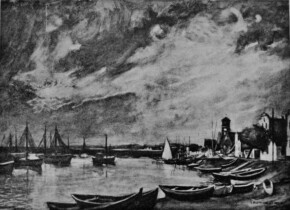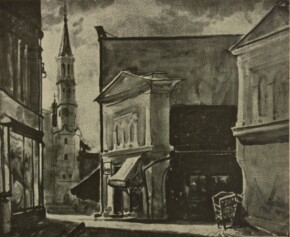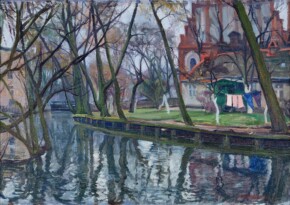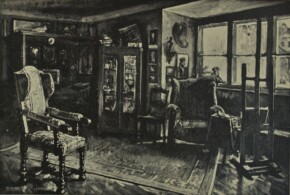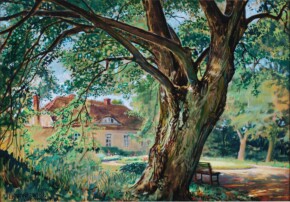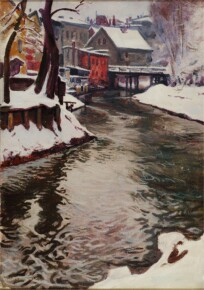A lecture of the Bydgoszcz Academy of Art
Jerzy Rupniewski, a painter active in the inter war period, is no stranger in the history of art. The work of the artist, educated at the Warsaw School of Fine Arts and later at the Kunstgewerbeschule in Munich, and at the Paris Academies (Académie Julian and Académie Chaumiére), who presented his works at prestigious salons and settled in Bydgoszcz in 1920, is most often associated with one theme. It is thanks to his picturesque landscapes of the city that he is sometimes referred to as: “Canaletto of Bydgoszcz” – so called by Marian Turwid (1931), or “Canaletto from the Brda,” a description used by Edward Szmańda (1980s).
In the lecture I would like to take up a few important issues which will contribute to revealing the authentic, multi threaded face of Rupniewski’s art, and at the same time will draw attention to the causes and effects of incomplete, erroneous or hasty statements and generalisations functioning in the consciousness of both art specialists and audiences.
The topics will be:
– Rupniewski’s position in the artistic life of Bydgoszcz and the region
– Art and life – the personality of a wanderer and idealist artist
– “The Worker of Art” – the motto of Rupniewski’s art and its influence on his work
– Themes of the works – views of Bydgoszcz and other projects
– The problem of recognising the legacy – preserved works and dispersed and lost works
– The issue of evaluating the painter’s output
Based on the memoirs and reviews of his contemporaries, as well as his own statements, Rupniewski’s distinctive personality emerges, which is marked by creative vitality, social qualities, practical sense and consistency in organisational work, and at the same time spontaneity in searching for novelties, expressing his own experiences in painting, and a sense of creative freedom. Rupniewski was a type of traveller and wanderer, and his trips inspired him to take up new painting challenges. He created and earned his living from painting, painted and sold a lot, but he did not shun the realisations of paintings made for the benefit of the city, e.g. in the Bernardine Library. After all, about his work he said himself: “Painting, which is everything in the world for me…”
The analysis of the group of preserved works and those known from sources and literature allows to identify several coherent thematic groups and to determine the chronology of appearance of motifs in painting. It will contribute to the answer to the title question – was the artistic nickname “Canaletto from the Brda” adequate to Rupniewski’s painting, what did it result from, and to what extent did it influence the perception of the painter’s art in the subsequent decades?
On the 130th anniversary of the artist’s birth, in 2018, let us recall the most recognisable Bydgoszcz painter in the inter-war period.
Barbara Chojnacka
Barbara Chojnacka – art historian, museologist, senior curator, head of the Graphics Department in the Leon Wyczółkowski Regional Museum in Bydgoszcz. She conducts research on the Polish graphics art of the 20th and 21st centuries, as well as the art and artistic life of Bydgoszcz and the region, especially in the inter war period. Curator of exhibitions and coordinator of the program – a series of graphics exhibitions and scientific sessions Multitude in unity (2009-2018).
11.04.2017, 6pm 20 Gdańska St.
admission free


